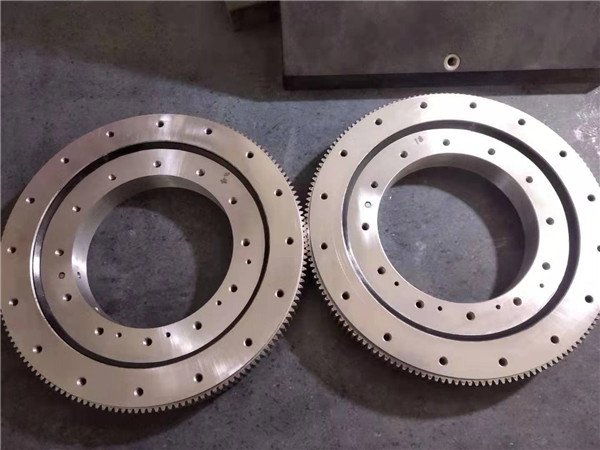What sealing device used for bearing? What material are there? How to choose?

Bearings are one of the common important mechanical parts in our lives and are called mechanical joints. Because the bearing is affected by the working environment, it needs to be dust-proof and sealed to protect the normal operation of the bearing and increase the service life. So do you know what sealing device is used in the bearing? What material is it made of?
- Bearing sealing device
In order to protect the bearing’s dust-proof and sealing effect, corresponding sealing devices will be installed on both ends of the bearing. There are dust cover and sealing ring. The two performances are different, one is dustproof and the other is sealed. The seal is to keep the grease (oil) inside the bearing from being lost during use, and the grease from the outside is not easy to flow in, so as to ensure that the bearing is in a lubricated state; dust prevention is to protect the outside of the bearing from dust or harmful gases from entering the bearing Cavity to prevent damage to the bearing.
It is often seen that different bearing seals are used on different bearings, so that the components can give the bearing a good sealing effect, and indirectly protect the use effect and service life of the bearing. The common ones are rubber or engineering plastic seals, as well as steel stamped seals (or dust caps). The sealing structure of the sealing ring is various, and the sealing effect is also different. If there is a gap between the sealing ring and the rotating shaft, it is called non-contact sealing. The smaller the gap, the better the sealing effect, but the lower the allowable shaft speed; the opposite is true. There is no gap between the seal ring and the rotating shaft, which is called a contact seal. The larger the contact area of the seal ring contact lip, the better the sealing effect, but the lower the speed of the shaft, the opposite is true.
How to express the bearing dustproof and sealing: Z is used for dust control, and S is used for seal (felt ring seal is expressed by FS; rubber seal is expressed by LS).
1). dust cover
ZZ: Retaining ring steel plate bearing dust cover, used for miniature bearings, and the structure in which the stamped metal steel plate is fixed on the outer ring with a spring tight ring.
2Z: Stamping steel plate bearing dust cover to reduce grease leakage, and the structure of metal steel plate reinforced on the outer ring by stamping.
2). Sealing ring
TT: Retaining ring type Teflon bearing seal ring, mainly used for miniature bearings. The structure of the Teflon seal ring added with glass fiber is fixed on the outer ring with a spring tight ring.
2RS: Contact rubber bearing seal ring, which effectively prevents the intrusion of foreign matter. The rubber seal ring is embedded in the outer ring of the bearing, and the seal ring is in slight contact with the inner ring.
- Material of sealing device
Depending on the specific use environment of the bearing, the materials used for the dust cover and the sealing ring are also different. The following briefly introduces several materials used for dust cover and sealing ring.
1) bearing dust cover material
The standard material of the dust cover of the bearing is cold-rolled electro-tinned steel plate, and sometimes ASI-300 stainless steel is used.
2) bearing seal ring material
Bearing seals mainly use nitrile rubber as the material. For high temperature environments, fluorine rubber and silicone rubber are also widely used.
①Silicone rubber: MQ/PMQ/VMQ/PVMP, temperature range: -70~200 degrees Celsius; hardness: 25~80; features: resistance to high temperature and drying, high abrasion resistance, resistance to sunlight and ozone aging; Limitations: poor surface wear and crack resistance.
②Hydrogenated (nitrile rubber): HNBR/NEM, temperature range: -35~165 degrees Celsius; hardness: 50~90; features: heat resistance, high ductility, chemical corrosion resistance; restriction: not suitable for ultra-low temperature conditions, avoid sunlight Direct sunlight and chemical erosion.
③Fluorine rubber: FKM/FPM, temperature range: -28~200 degrees Celsius; hardness: 50~95; features: high temperature resistance, significant chemical corrosion resistance, corrosion resistance to petroleum products; limitation: not suitable for low temperature working conditions .
④Polypropylene rubber: ACM Rubber, temperature range: -18~175 degrees Celsius; hardness: 40~90; features: strong resistance to hot oil, sunlight and ozone erosion and strong crack resistance; restrictions: Poor waterproof performance, not suitable for ultra-low temperature working conditions.
- The choice of bearing sealing device
Whether the bearing uses a dust cover or a sealing ring depends on the requirements of the bearing. The dust cover does not contact the inner ring of the bearing and is installed in a non-contact type. The sealing ring is in contact with the inner ring of the bearing and is a contact installation. Therefore, the limit speed of the dust cover bearing is higher than that of the seal ring bearing, and the protection level of the seal ring bearing is higher than that of the dust cover. The seal ring bearing has good waterproof performance, and the seal ring bearing can better prevent the grease from flowing out. .
The above is a brief introduction to what kind of sealing device the bearing adopts. In recent years, bearings with different sealing rings have appeared in various rolling bearings. Therefore, sealing is one of the important directions for the development of bearing technology. Bearings with different structures and different working conditions require different structures and materials of the sealing ring. Common sealing methods are divided into three categories: contact, non-contact, and combined sealing. Which will be refined according to the actual situation.


